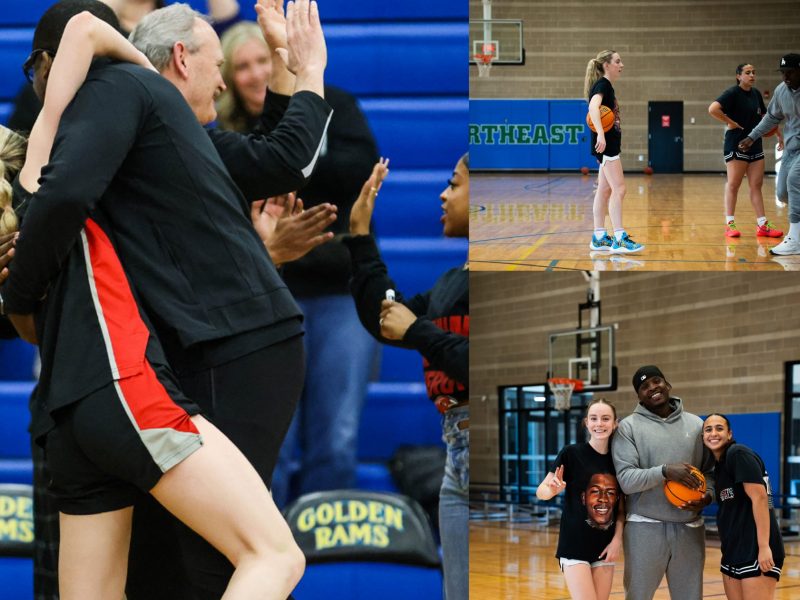A lone elderly man shuffling down the street, or a shapeless lump sleeping on a park bench; these are the stereotypes of homelessness, but they may not be its true faces.
John Harrison, Steve Thomas and James Davis would know; they’ve all been homeless in Washington within the past five years.
Last night, the three shared their experiences with about 50 students in the Prince George’s Room in Stamp Student Union. Sponsored by this university’s chapter of Voices of Social Change, the discussion aimed to show the campus community the real “faces of homelessness” in the local area.
At first glance, there seems to be no indication the men had ever been homeless. They are engaging, funny and articulate, and they seem to have a knack for making well-timed jabs at college students and pop culture. This served to illustrate the uniting theme of their different stories — homelessness can happen to anyone at anytime.
“Homelessness has no discriminatory value to it,” said Davis, who lived out of Amtrak and Greyhound stations after his lifelong battle with depression led to a divorce. Although he was a college graduate from a middle class family, Davis saw his job offers disappear when he entered the job market after Sept. 11 without a government security clearance.
For Thomas, college was “never even in the cards.” A drug dealer by age 15, his 40 years of addiction culminated in an 18-month stay on a Pennsylvania Avenue bench. He said the irony of being homeless on perhaps the most influential street in the world did not escape him.
Harrison, who became homeless after he lost his house to a fire and his car broke down, emphasized the emotional and psychological toll homelessness has on the individual.
“When I lost my job and lost my home, I thought I had lost everything I had to lose,” he said. “I didn’t realize I could still lose my dignity.”
All three men are now back on their feet and currently involved with the National Coalition for the Homeless, an advocacy group for homeless Americans.
“It’s not a small problem going away,” Harrison said of homelessness. “It’s a big problem getting worse.”
Harrison said he understands the challenge of breaking through stereotypes to educate people and move them to action.
“Before we get people enthused about it … we need to change some minds,” he said. “Because, quite frankly, I’m not a cute little kid with cancer.”
The men said negative assumptions about homelessness abound, especially that the condition is always the individual’s fault. To negate this, Thomas referenced the recent victims of Hurricane Sandy.
“The day before they were a happy family, and now they’re homeless,” he said. “Some people are going to be able to recover and some aren’t.”
The speakers also named several ways students can help someone experiencing homelessness. These can be as simple as offering encouraging words or buying them a small coffee or item from the dollar menu. Even just making eye contact and smiling are appreciated greatly, they said.
“Someone chose to help me unconditionally,” Thomas said. “Each and every one of you have the ability to effect change in the lives of people less fortunate than you.”
Several students said the presentation was an eye-opening experience.
“The thing that was mind-blowing to me is how you can make a huge influence on the direction of someone else’s life based off of the attitude you chose,” sophomore bioengineering major Michael Sikorski said.
Senior cell biology and genetics major Arsh Agarwal agreed.
“I needed to hear about homelessness,” he said. “I needed to have my eyes opened.”


